2025 Native Plant Sale Friday April 4th and Saturday 5th and PreOrder Pick-up
!
- Join the Hood RIver SWCD Native Plant Sale! All plants will be available at the day of sale on Friday, April 4th from 12 pm to 5 pm and Saturday, April 5th from 9 am to 1 pm. Stop by 3005 Experiment Station Road to pick up your pre-orders, purchase additional bare root plants and our vast selection of native wildflowers! We accept cash, checks or credit cards.
Check out the entire list of species available on April 4th and 5th, 2025, click on the plants below for more information! (It says sold out but everything is available on the sale days!) In the meantime, take a look around your gardens and wild spaces and browse the species below to see which of them would be a good fit! Please reach out to Cheryl if you have any questions—we are always happy to talk native plants!
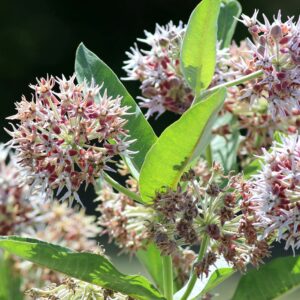 Out of stock
Out of stock
Showy Milkweed
Showy milkweed is an essential plant for various life stages of the monarch butterfly. Showy Milkweed is an essential plant for pollinators. Once established, it can grow in habitats ranging from dry to moist in road-sides, old fields, and meadows. Known for it’s fragrant flowers, this herbaceous perennial spreads through rhizomes in the soil. In the Summer, Showy Milkweed produces seed pods where they release their seeds which are dispersed by the winds. These plants will come to you as rhizomes and should be planted horizontally 4-6″ deep in the soil.
Read more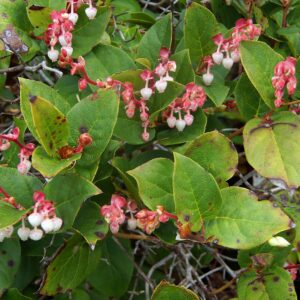 Out of stock
Out of stock
Salal
*Potted Plant – Sold at the Day-Of Sale Only* Each potted plant is $4.50.
This evergreen shrub is also found in the shady understory of a forest, primarily west of the cascades and on the coast. Salal can reach heights of 6 feet but is more commonly three feet. It has edible berries July-September and can spread through rhizomes.
Read more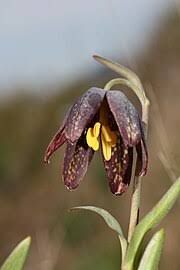 Out of stock
Out of stock
Chocolate Lily
*Potted Plant – Sold at the Day-Of Sale Only* Each potted plant is $4.50.
Also known as Rice Root, Chocolate Lilly is a perennial that grows in open woods, meadows and stream banks. A long stem consisting of 5-9 leaves in whorls, grow from a sweet, edible bulb. From late Spring to mid Summer, bell shaped flowers emerge that are a dark purple/brown yielding yellow/green spots. The Chocolate Lilly attracts various pollinators while serving as an important food source to wildlife.
Read more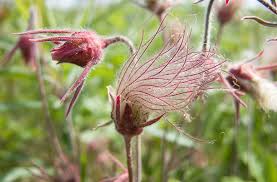 Out of stock
Out of stock
Prairie Smoke
*Potted Plant – Sold at the Day-Of Sale Only* Each potted plant is $4.50.
Prairie Smoke is a perennial that grows in dry, open woods, slopes and meadows. It has clumps of fern-like, hairy basal leaves with pink, feathery seed heads. Prairie Smoke blooms in last Spring and early Summer producing clusters of wispy reddish-pink or purple bell-like flowers. It attracts a variety of pollinators and spreads slowly through its root system by seed.
Read more Out of stock
Out of stock
Noble Fir
Tall, symmetrical tree making it another popular Christmas tree. It has large upright cones at maturity. Grows 100-200 feet in moist areas at middle to upper elevation and is best in full sun.
Read more Out of stock
Out of stock
Kinnikinnick
*Potted Plant – Sold at the Day-Of Sale Only* Each potted plant is $4.50.
Also known as Red Bearberry, Kinnikinnick is a hardy, fast growing, evergreen ground cover. Kinnikinnick grows on sandy slopes, rocky hillsides, in meadows and forests. During spring, the small bell shaped pink flowers bloom, afterwards, the red berries are produced and can last until winter. The glossy leaves on this plant will stay green all year long. This plant is low maintenance, drought tolerant (water well when establishing), and attracts insects and hummingbirds.
Read more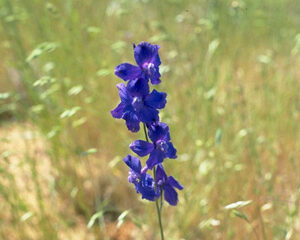 Out of stock
Out of stock
Columbian Larkspur
*Potted Plant – Sold at the Day-Of Sale Only* Each potted plant is $4.50.
Columbian Larkspur grows in moist, shady woods and wet banks. It has large, shiny deeply lobed leaves. In last Spring, the plant produces deep purple-bluish flowers on long stems. Columbian Larkspur attracts a variety of pollinator species. It is important to note the plant is toxic, hence the common name, Cow Poison.
Read more Out of stock
Out of stock
Arrowleaf Buckwheat
*Potted Plant – Sold at the Day-Of Sale Only* Each potted plant is $4.50.
Arrowleaf Buckwheat is a drought tolerant perennial that grows in dry open areas, rocky slopes and outcrops. The large arrow shaped leaves are green on top and wooly white underneath. At the end of the leafless stems, clusters of tiny creamy white/yellow flowers bloom from mid-Spring to early-Summer. A variety of pollinators are attracted to the Arrowleaf Buckwheat.
Read more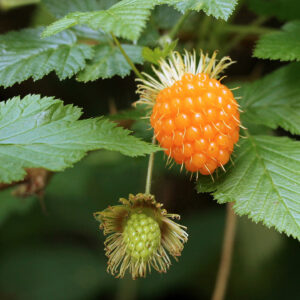 Out of stock
Out of stock
Salmonberry
This iconic PNW berry is found from SE alaska to northern California. It grows in wet woodlands and along stream banks and can handle sun to shade. It forms dense thickets that can grow 3-6 feet tall.
Read more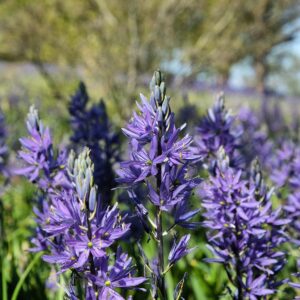 Out of stock
Out of stock
Common Camas
*Bulbs – Sold at the Day-Of Sale Only* Each bulb is $4.50.
Camas is a member of the lily family and produces violet-blue showy flowers from bulbs in the Spring. Common Camas grows in wet meadows, wet prairies, annual floodplains, moist hillsides, and streamside areas. Consistent soil moisture is required every Spring, but the soil can be allowed to dry out soon after the pods mature or the leaves senesce. These will come to use as bulbs and should be planted 4-6″ deep in the soil.
Read more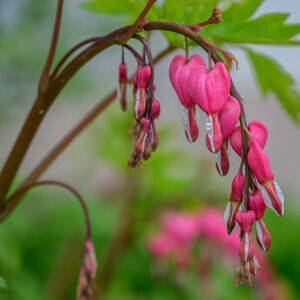 Out of stock
Out of stock
Pacific Bleeding Heart
*Potted Plant – Sold at the Day-Of Sale Only* Each potted plant is $4.50.
This perennial is a member of the Poppy Family. Pacific Bleeding Heart grows in shady woodlands and streambanks. The purple to pink heart shaped flowers hang in small clusters above soft, fern-like, blueish-green leaves at the base. The plant quickly spreads by seeds and runners providing ground cover. The Pacific Bleeding Heart is a hummingbirds favorite.
Read more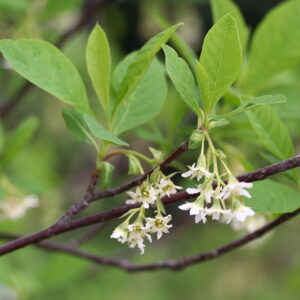 Out of stock
Out of stock
Osoberry
Also known as Indian plum, this deciduous shrub grows to about 15 feet tall in the understory of forests. It is one of the first plants to leaf out and flower, letting you know that spring has arrived! It produces white tubular flowers early, which turn into small purple fruit that resemble plums. It grows in dry to moist soils and prefers shade. This plant is dioecious, meaning there is a male plant and a female plant, so you will need both a male and a female plant to produce the fruit.
Read more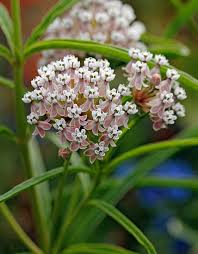 Out of stock
Out of stock
Narrow Leaf Milkweed
*Potted Plant – Sold at the Day-Of Sale Only* Each potted plant is $4.50.
Narrow Leaf Milkweed is a drought tolerant perennial that is found in dry, sunny spots in valleys and foothills. It has long, narrow, pointed leaves that gives the plant a soft, wispy look. From Summer to Fall, clusters of lavender to pinkish-shite button shaped flowers bloom. The Narrow Leaf Milkweed grows fast up to 3 feet tall. It can easily spread when the seed pods open and the seeds attached to silky hairs are carried by the wind. Provides a variety of resources to pollinators.
Read more Out of stock
Out of stock
Common Yarrow
*Potted Plant – Sold at the Day-Of Sale Only* Each potted plant is $4.50.
This herbaceous perennial is a member of the Aster Family. Yarrow grows in grasslands and open forests. Small white flowers form flat-topped clusters and aromatic, fine, feathery-cut leaves, give a soft, fern-lie appearance. This plant is drought-resistant and spreads easily. Common Yarrow attracts a variety of insect pollinators.
Read more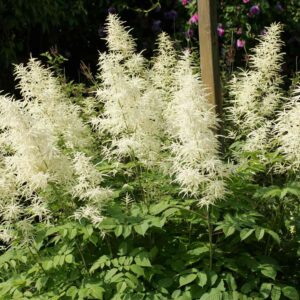 Out of stock
Out of stock
Goat’s Beard
*Potted Plant – Sold at the Day-Of Sale Only* Each potted plant is $4.50.
Goat’s Beard is a large, shrub-like perennial that can be found in moist woods, meadows and streams. It grows in large bushy clumps with feathery clusters of tiny cream colored flowers that bloom from late May to mid July. Goat’s Beard is a slow spreader through rhizomes where it can eventually form a large patch. Attracts butterflies and other beneficial insects along with providing shelter for a variety of other species.
Read more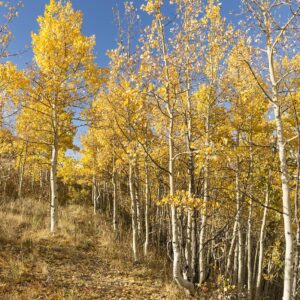 Out of stock
Out of stock
Quaking Aspen
A fast growing tree with smooth white bark and beautiful fall foliage. Leaves ‘tremble’ in the slightest wind. Aspens are found at upper elevations but can be planted in the landscape lower. Trees can grow up to 75 feet tall and require moist to wet sites and full sun. *Please be aware this plant spreads through rhizomes and should not be planted next to a foundation or septic system.*
Read more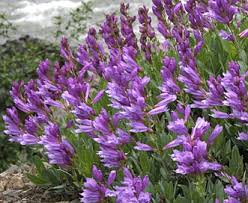 Out of stock
Out of stock
Barrett’s Beardtongue
*Potted Plant – Sold at the Day-Of Sale Only* Each potted plant is $4.50.
Barrett’s Beardtongue, also known as Barrett’s Penstemon, is a drought tolerant perennial that grows on steep cliffs and rocky areas. With thick, leathery blueish to gray-green leaves, this penstemon has tubular purple to pink flowers that bloom from mid to late Spring. Barrett’s Beardtongue attracts a variety of pollinator insects.
Read more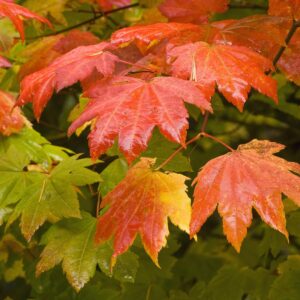 Out of stock
Out of stock
Vine Maple
A small multi-trunk tree growing up to 25 feet tall. A common understory plant in our western forests. Found in moist to wet places in the shade of other trees. It will thrive in sunny openings with adequate moisture. Produces spectacular fall color in drier sites with more sun.
Read more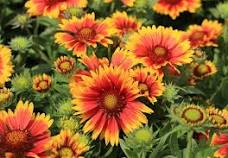 Out of stock
Out of stock
Blanket Flower
*Potted Plant – Sold at the Day-Of Sale Only* Each potted plant is $4.50.
This drought tolerant perennial is a member of the Aster Family. Blanket Flower grows in dry plans and open areas. It forms a low mound of light green leaves which gives rises to a stem with large daisy like flowers with a dark maroon center. The flowers vary in color with combinations of yellow, orange and red. A great addition to help attract butterflies and other beneficial insects.
Read more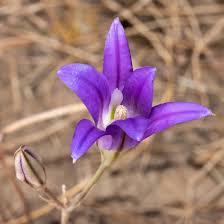 Out of stock
Out of stock
Harvest Brodiaea
*Potted Plant – Sold at the Day-Of Sale Only* Each potted plant is $4.50.
Harvest Brodiaea is a drought tolerant perennial which grows in meadows and open woodlands. Growing from a corm, the blue-violet funnel shaped flowers are at the top of a leafless stalk. The Harvest Brodiaea begins to bloom when the fields dry out late Spring and will bloom throughout the Summer. Attracts a variety of pollinator species.
Read more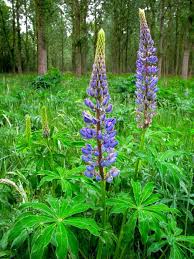 Out of stock
Out of stock
Large-Leaved Lupine
*Potted Plant – Sold at the Day-Of Sale Only* Each potted plant is $4.50.
Large-Leaf Lupine is one of the tallest werst species of lupine. It grows along streambanks, in meadows or other moist locations. The bold, green leaves support the tall spires of blue/purple pea shaped flowers that bloom from late Spring to early Summer. Large-Leaf Lupine spreads through underground rhizomes and seeds that are produced in seed pods. It attracts a variety of pollinator species.
Read more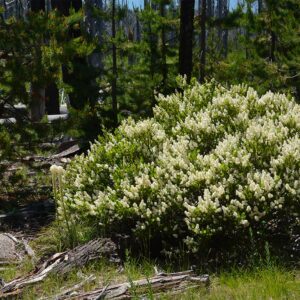 Out of stock
Out of stock
Red Stem Ceanothus
Also known as Redstem Wild Lilac, this shrub has white, showy clusters of flowers. They are vey fragrant and pollinated by bees. It is also commonly browsed by deer and elk. This plant is located on both sides of the Cascades and is often found in dry open sites where it improves the soil through nitrogen-fixation.
Read more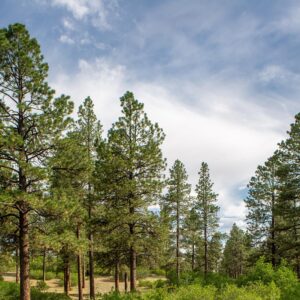 Out of stock
Out of stock
Ponderosa Pine
Large pine with long needles and cinnamon-colored puzzle-piece looking bark. It develops a taproot early in life, which helps it to survive extended drought periods. The Ponderosa Pine grows up to 150 feet tall, best in full sun and tolerates dry conditions. Mature Ponderosa Pines are very fire resistant due to their thick bark and high crowns.
Read more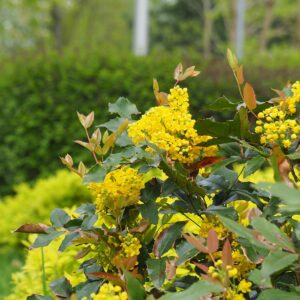 Out of stock
Out of stock
Tall Oregon Grape
*Potted Plant – Sold at the Day-Of Sale Only* Each potted plant is $4.50.
This evergreen plant is the state flower of Oregon! It has bright yellow fragrant flowers early in the Spring and sharp spiny leaves. Tall Oregon Grape grows on dry, rocky, open sites. Many birds find the berries of this plant irresistible. It may grow slowly at first, but once it is established will quickly grow to its mature size. This plant is great in hedgerows or for erosion control.
Read more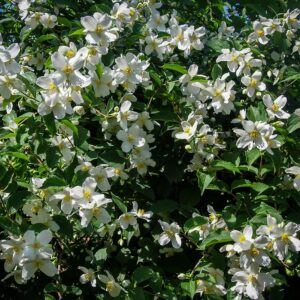 Out of stock
Out of stock
Mock Orange
You want this plant. Mock orange is a loosely branched deciduous shrub, which grows 5- to 10-feet tall. It has showy, fragrant, white flowers that appear in May. It will grow in moist-dry, well-drained soils and prefers full sun to partial shade. In the bare root form it will come as a faily delicate plant but grows quick, it may just take a bit of extra care to get it established.
Read more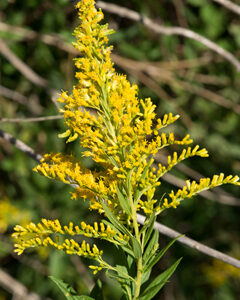 Out of stock
Out of stock
Goldenrod
*Potted Plant – Sold at the Day-Of Sale Only* Each potted plant is $4.50.
This drought tolerant perennial is a member of the Aster Family. Goldenrod grows in open woods, meadows, and riverbanks. Forms clumps of lance-leaved vegetation, that can grow up to 6 feet high. Pyramid-shaped cascading clusters of yellow leaves bloom from mid Summer into Fall. It is fast growing and spreads by rhizomes and seeds. Goldenrod attracts pollinators while in bloom and a variety of birds in the Fall for the seed.
Read more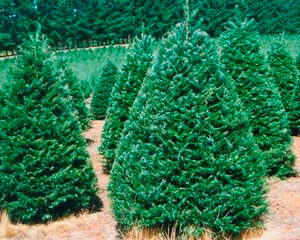 Out of stock
Out of stock
Grand Fir
Popular Christmas tree with glossy, dark green needles. Has downward sloping branches and thick foliage. Grows 100 to 200 feet tall and is shade tolerant when young. Dry to moist sites.
Read more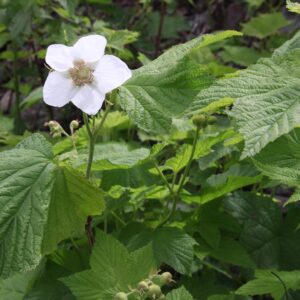 Out of stock
Out of stock
Thimbleberry
Thimbleberry is a staple of summer berries in July-September. It has wide fuzzy leaves and no thorns. It will grow 2-4 feet tall and is found in moist to dry open woods or along edges. It is rhizominous so will spread to form a stand.
Read more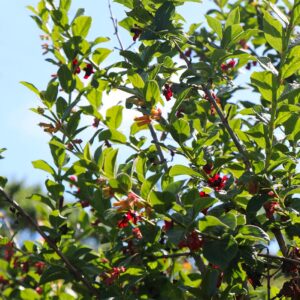 Out of stock
Out of stock
Twinberry
Twinberry is part of the Honeysuckle Family. It can often be found in wetlands, alongside streams, and in open forests. This plant is a great “edge” species when planted between a forest and more open areas. It blooms with small yellow tubular flowers and is known for its showy pink bract surrounding shiny black fruit.
Read more Out of stock
Out of stock
Western Red Cedar
The Western Red Cedar thrives in mixed conifer forests and would make an excellent hedge row or windbreak. It can grow up to 2 feet per year in the right environment. The tree’s scale-like foliage is aromatic when crushed and its red-brown bark is equally fragrant. Western Red Cedars make excellent habitat for a variety of wildlife.
Read more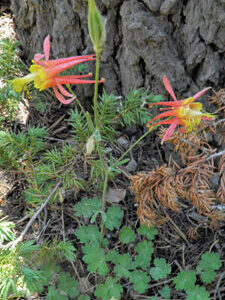 Out of stock
Out of stock
Red Columbine
*Potted Plant – Sold at the Day-Of Sale Only* Each potted plant is $4.50.
This self seeding perennial is a member of the Buttercup Family. Red Columbine grows in partly shaded to shaded woodland habitats. Also known as the Western Columbine, these striking flowers have a long bloom time from late Spring through Summer. The flowers rise above clumps of lobed leaves attracting a variety of wildlife.
Read more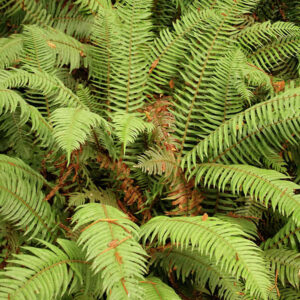 Out of stock
Out of stock
Sword Fern
*Potted Plant – Sold at the Day-Of Sale Only* Each potted plant is $4.50
Sword ferns are found in the understory of moist western forests. They have tall arching evergreen fronds that can reach 4 feet in height but are more commonly about 2ft. Sword ferns are more adaptable than most ferns and can take a bit more sun and some dry periods.
Read more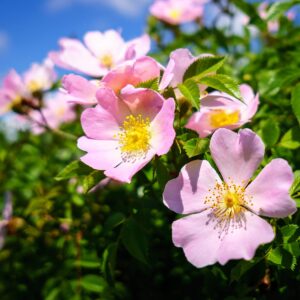 Out of stock
Out of stock
Woods Rose
This species will grow 2-9 feet tall and can handle both wet and dry soils and prefers full sun. It has showy pink flowers in the spring and bright red rose hips in the fall giving nice color for winter. This plant can be aggressive making it a great species for restoration sites, hedge rows, fence lines, or places that are hard for other plants to establish.
Read more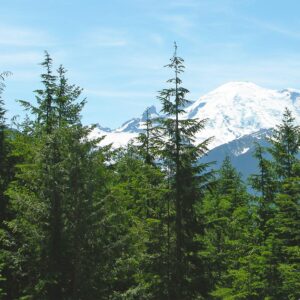 Out of stock
Out of stock
Western Hemlock
A coniferous tree with gracefully down-sweeping branches containing numerous small cones. The needles are short and flat and create a feathery appearance. Can grow to a height of 140-180 feet tall and 2-4 feet in diameter. Hemlocks will grow in full sun to part shade. It is one of the most common trees in the Pacific Northwest, forming vast, dense groves and can usually be recognized by its drooping top.
Read more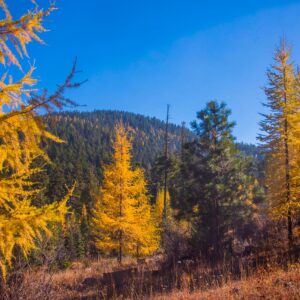 Out of stock
Out of stock
Western Larch (Tamarack)
A deciduous conifer! The needles turn a golden yellow color in fall and drop. In spring the regrow a vibrant bright green. Naturally found at upper elevations (2,000-7,000 feet). It prefers moist sites to can handle dry conditions. Larch prefer full sun and are not shade tolerant. It is a fire and pest resistant species.
Read more Out of stock
Out of stock
Oregon Sunshine
*Potted Plant – Sold at the Day-Of Sale Only* Each potted plant is $4.50.
This drought tolerant perennial is a member of the Aster Family. Oregon Sunshine grows in dry, sandy soils and rocky slopes. Also known as the Wooly Sunflower, they have bright yellow, daisy-like flowers with grayish-green lobed leaves covered in soft, white hairs. It rapidly spreads its seeds to the surrounding open ground. A great addition to help attract butterflies and other beneficial insects.
Read more Out of stock
Out of stock
Beaked Hazelnut
This hazelnut is a multi-stemmed tree found in open forests or along forest edges. In spring, the male plants have bright yellow catkins before the leaves appear offering a welcome sight from the long days of winter. The fruit on the plant is a smooth nut with a very hard shell. The nuts are rich in protein and fat which are a favorite of squirrels and birds.
Read more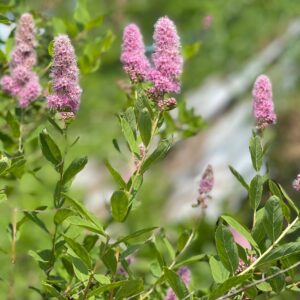 Out of stock
Out of stock
Douglas Spirea
Douglas spirea is rhizomatous and multi-branched shrub that grows 5-8 feet tall. It prefers moist to wet soils and full sun. It produces bright clusters of tiny pink flowers. This plant is excellent for wetlands and riparian areas but can tolerate drier soils in a landscape setting.
Read more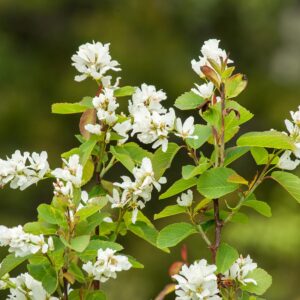 Out of stock
Out of stock
Serviceberry
Multiple-stemmed, deciduous upright shrub or single-trunk small tree growing 10- to 25-feet tall depending on site conditions. Fragrant white flowers appear in April through May. Excellent fall color. Full sun to partial shade.
Read more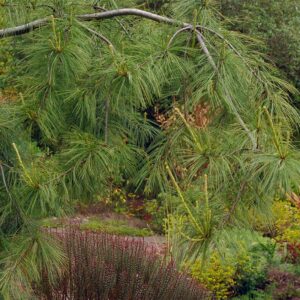 Out of stock
Out of stock
Western White Pine
This soft needled pine is found throughout the Cascade Range usually at higher elevations. It is fast growing when young and prefers sun and fairly dry conditions. This blue-green soft needled pine can reach 45-120 feet tall depending on site conditions. It is a lovely addition to the landscape.
Read more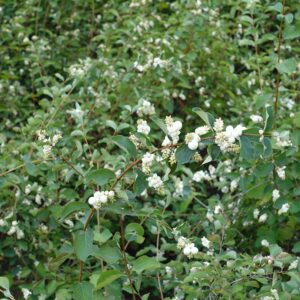 Out of stock
Out of stock
Snowberry
This unsung hero of the plant world is versatile, elegant, and tough as nails—if you cant get something grow in a specific location, plant snowberry. This deciduous shrub is 2-6 feet tall and very adaptable to a wide range of growing conditions. It produces small pink and white flowers in the spring and clusters of showy white berries that persist through the winter. *Careful: the berries are poisonous if eaten by humans but are great for wildlife.
Read more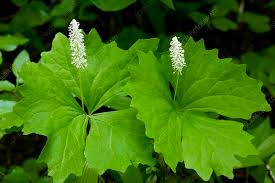 Out of stock
Out of stock
Vanilla Leaf
*Potted Plant – Sold at the Day-Of Sale Only* Each potted plant is $4.50.
Vanilla Leaf is a perennial that is found in coastal forests and streambanks. It provides great groundcover spreading through underground rhizomes. During the Spring, Vanilla Leaf sends up a fluffy spike, covered in white flowers clustered together. In Winter, the dried leaves produce a vanilla fragrance which acts as a natural insect repellent.
Read more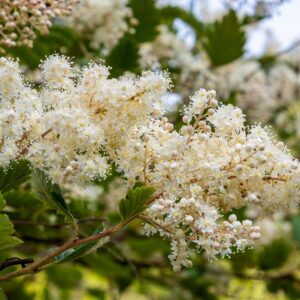 Out of stock
Out of stock
Oceanspray
Deciduous shrub, usually has several main stems and grows up to 15 feet tall. Flowers are profuse, white to cream, and form cascading clusters. Grows in well-drained, dry sites. Prefers full sun to part shade.
Read more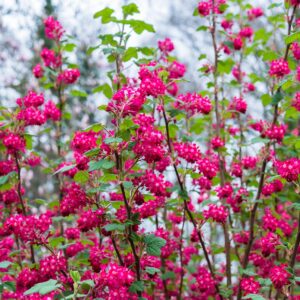 Out of stock
Out of stock
Red Flowering Currant
Red Flowering Currant is an upright shrub that reaches heights of 10 feet. Beautiful pink to deep red cluster of flowers that let you know spring has arrived. Red flowering currant prefers dry to moist, well-draining soils. It will grow in partial shade to full sun.
Read more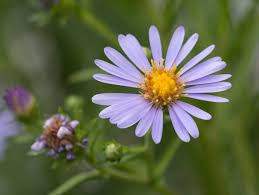 Out of stock
Out of stock
Douglas Aster
*Potted Plant – Sold at the Day-Of Sale Only* Each potted plant is $4.50.
Douglas Aster is a hardy perennial that grows in a variety of habitats including coastal regions, wetlands, wet forests and riverbanks. It has many stems with hairy, toothed leaves. From mid Summer through mid Fall, bluish-purple flowers resembling mini daisies are produced. Douglas Aster grows rapidly from rhizomes creating clusters of long, flowering stems overtime. It is highly attractive to many different pollinators.
Read more Out of stock
Out of stock
Idaho Fescue
*Potted Plant – Sold at the Day-Of Sale Only* Each potted plant is $4.50.
This drought tolerant perennial grass grows in dense clumps on hillsides, meadows and forestlands. There are stiff, short, rolling leaves at the base of the tuft. From mid-Spring to mid-Summer, the flower clusters have hairy spikelets that produce fruit (grain). Idaho Fescue has root systems penetrate deep into the soil. It reseeds regularly and is excellent for erosion control.
Read more Out of stock
Out of stock
Oregon Iris
*Potted Plant – Sold at the Day-Of Sale Only* Each potted plant is $4.50.
Oregon Iris grows in meadows and forest openings. Once established, this drought tolerant perennial forms a low mound of thin grassy leaves that stay green throughout the year. The long lasting lavender-blue to purple flowers bloom in late Spring and early Summer. It spreads slowly through rhizomes forming small clumps. Oregon Iris attracts bees, hummingbirds and the occasional butterfly.
Read more Out of stock
Out of stock
Purple Coneflower
*Potted Plant – Sold at the Day-Of Sale Only* Each potted plant is $4.50.
Once established, Purple Coneflower is a drought tolerant perennial that grows in open woodland edges and clearings, and in meadows. It has smooth stems with rough, scattered leaves that become smaller towards the top of the stem. Each purple flower sits atop its own stem. It flowers throughout the Summer attracting a variety of pollinator species.
Read more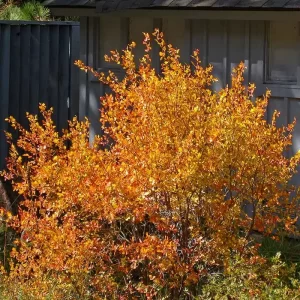 Out of stock
Out of stock
Three Leaf Sumac
Also known as Lemonade Sumac, this drought tolerant hearty shrub grow up to 8 ft tall and can handle a wide range of conditions. Yellowish flowers cluster in spikes which are followed by red fruit. This is another plant that shows striking fall foliage in the shades of yellow, orange and red.
Read more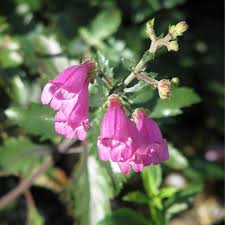 Out of stock
Out of stock
Richardson’s Penstemon
*Potted Plant – Sold at the Day-Of Sale Only* Each potted plant is $4.50.
Richardson’s Penstemon is a drought tolerant perennial that grows in dry rocky areas and in prairies. The dusty green foliage forms dense clusters that grow upright. The spreading flower spikes contain pink-purplish tube shaped flowers that resemble open mouths that bloom throughout the Summer. It reseeds rapidly and attracts a variety of pollinators.
Read more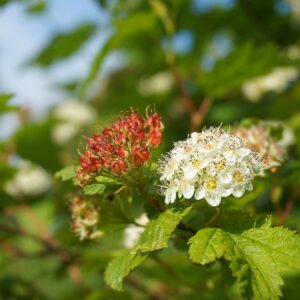 Out of stock
Out of stock
Pacific Ninebark
A deciduous shrub that grows to 15 feet tall with a similar spread. Produces white flower clusters in late spring to early summer. It is often found growing along streams and other moist sites but can grow in drier soils in a landscape setting. Can grow in full shade to part sun. A good riparian plant.
Read more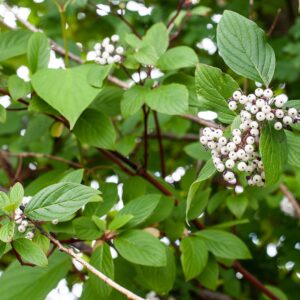 Out of stock
Out of stock
Red Osier Dogwood
A multi-stemmed, deciduous shrub that grows to 15 feet tall. Small greenish-white flowers grow in dense, flat-topped clusters in spring and produce bluish-white berries in the fall. Excellent fall color. Stems turn are bright red in winter providing much needed color that time of year. It is a good plant for riparian areas or ponds. Prefers moist soil and partial to full sun.
Read more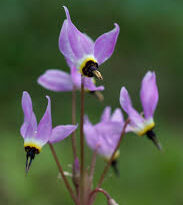 Out of stock
Out of stock
Henderson’s Shooting Star
*Potted Plant – Sold at the Day-Of Sale Only* Each potted plant is $4.50.
Shooting Star grows in seasonally wet habitats along streambanks, moist flats, cliffs and grassland communities. It has a basal rosette of leaves with a stem covered in tiny hairs. This plant blooms in early Spring, creating pink-purplish flowers with a yellow base. 2-10 flowers sit atop a stalk that attracts a variety of beneficial pollinators.
Read more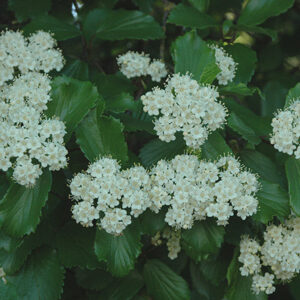 Out of stock
Out of stock
Oregon Viburnum
Viburnam ellipticum is native to southwest Washington to central California and found primarily on the west side of the cascades. It grows 3-9ft tall in a multistemmed bush. This plant provides white cluster flowers in May and June and beautiful fall colors.
Read more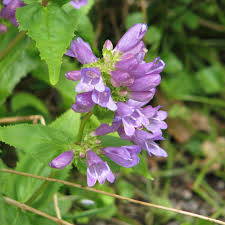 Out of stock
Out of stock
Cascade Penstemon
*Potted Plant – Sold at the Day-Of Sale Only* Each potted plant is $4.50.
Cascade Penstemon is a perennial that grows in moist meadows, forest openings, and along streambanks. The sharp pointed leaves are spaced around stalks. Tubular purple, blue flowers bloom near the top of the stalk throughout the Summer. The Cascade Penstemon attracts a variety of pollinator species.
Read more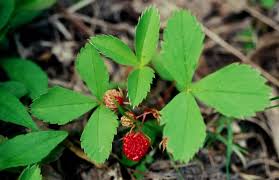 Out of stock
Out of stock
Mountain Strawberry
*Potted Plant – Sold at the Day-Of Sale Only* Each potted plant is $4.50.
This perennial groundcover is a member of the Rose Family. Wild Strawberry grow in meadows, open forests and forest edges. Bright green leaves produce white flowers in late Spring and early Summer which develop into small red strawberries. It spreads through above and underground runners to create great groundcover. Bees and other pollinators are attracted to the white flowers.
Read more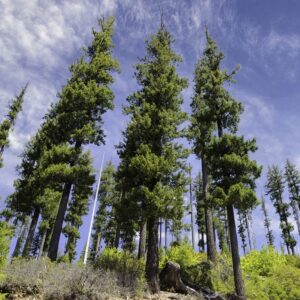 Out of stock
Out of stock
Douglas Fir
Fast growing conifer that will grow in all but the wettest and driest conditions. Grows 100-200 feet tall and prefers full sun. Grows from sea level to high elevation. It has thick bark and the larger ones tend to survive wildfire and reseed in many burned areas. Douglas fir are the state tree of Oregon!
Read moreWe are grateful for your interest in native plants and the services they provide. Adding native plants into the landscape provides pollinator habitat and nesting sites for birds. Native plants along creeks provide shade for waterways and protect aquatic life and fish species. They anchor soils and beautify the landscape—there are endless reasons that adding native plants into the landscape is beneficial.

